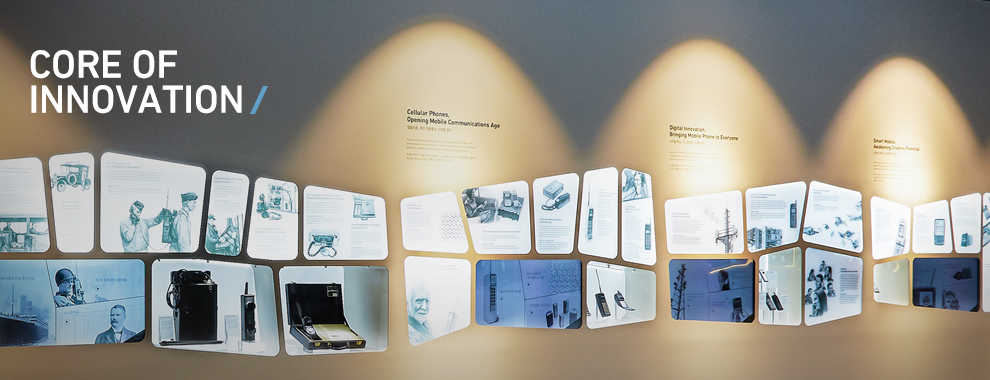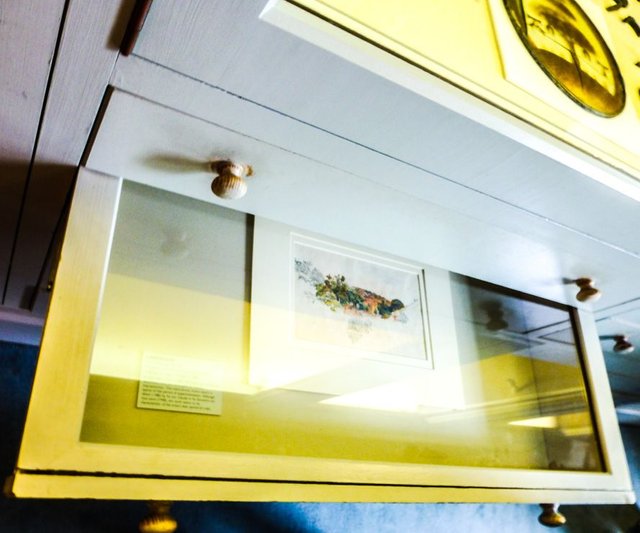Space Interaction Design in The Hunt Museum
As public nonprofit institutions that have undertaken the functions of research, exhibition, education, and entertainment in the social and cultural activities, museums have a great amount of information contained in their exhibits. This should be the museum's advantage in information dissemination. However, traditional museum displays only focus on the form of exhibition, and ignore the connotation of exhibition object and the validity of information.
Along with the development of multimedia technology and the diversification of information transmission methods, accesses to information are becoming much easier. As a result, the number of visitors to many traditional museums is sparse, not to mention the effective use of social functions as education and entertainment venues. The fundamental purpose of the presentation is the effective dissemination of information. Nevertheless, the traditional museum's inefficient exhibition mode cannot meet the needs of the time, which seriously affects the service level of the museum and restricts the museum's self-innovation and development.

(Samsung's new innovation museum)
Therefore, in order to improve the efficiency of information dissemination and realize the fundamental purpose of museum exhibition activities, this article intends to take the Hunt Museum located in Limerick, Ireland as an example. It will introduce and analyze the principles of space interaction design in museums. And I hope those methods will be applied to practice and promote the museum to deepen its connotation.

(The Hunt Museum)
The Hunt Museum, founded in 1974 in Limerick is a collection of donations from the Hunt family. In 1997, the museum was declared open to the public. It is an 18th-century-old building, and its collection is organized and displayed according to different structures and properties, and also based on Victorian grading standards. The most obvious difference between the Hunt Museum and most of its similar museums is that it integrates traditional exhibition content with elements that allow visitors to engage directly. We will discuss this feature in a later section of the study.
The Charm of Opening Drawers
In the Hunt Museum, the area where visitors are most interested is a collection of objects that have been placed in many cabinets. These cabinets drive the complex dynamic process of understanding and sharing knowledge for visitors. They are arranged in the original layout of the Hunt family, with a variety of artifacts (artwork, archaeological finds, drawings, tapestries, etc.).
Traditional museum regulations do not exist here because people can open cabinets, boxes, and drawers and study the contents. The only protection is a thick glass plate on top of the drawer. This surprised visitors. At first, many people don't realize that the museum allows them to do so, however, once they find the possibility around the exhibits, they immediately begin to observe, interact and have a discussion. Drawers, cabinets, and boxes inspire visitors' thirst for knowledge and exploration. Because these cabinets are usually open only by their owners, and often only in private space, not in museums. They are intimate. In the eyes of visitors, it is very exciting to uncover secrets and discover precious and hidden things. Another reason is that visitors are often forbidden to touch objects in traditional museums. Curiosity and expectation promote the visitor's understanding of the exhibits and the process of acquiring knowledge through active exploration. These cabinets and drawers stimulate the curiosity of visitors, encourage behavior and feedback, and give people an engaging experience.
The interaction that occurs around the drawer shows two rules: first, a collaborative discussion can deepen the understanding of the object; Second, emotional reactions affect the experience and interest and evaluation of the exhibition itself.

(Photo by Gina.R: Obey the signs telling you to OPEN drawers. No photos allowed tho.)

(One Day in Limerick onedayinacity)
In the design process of museum facilities, it is very important to understand how visitors interact with objects through the exhibition area. Understanding how visitors communicate with the museum and its information resources through cultural heritage is critical. The absorption of the exhibition means not only the appreciation of the details of the exhibits, but the connection between the layout and each part of the "story" to be told. To find out how to create a new interactive environment in a museum, there are three things to be clear about. First of all, cultural relics themselves have a hidden influence on the shaping of emotional experience; Secondly, the cultural rules and restrictions of museums affect the possibility of interactive experience with visitors; Thirdly, the diversity of museum artifacts and their interrelated requirements must be flexible.
100% of the SBD rewards from this #explore1918 post will support the Philadelphia History Initiative @phillyhistory. This crypto-experiment conducted by graduate courses at Temple University's Center for Public History and MLA Program, is exploring history and empowering education. Click here to learn more.
The idea and the experience of drawers to open in a museum is fantastic. It literally augments reality literally! There is an example closer to home next to Temple University: the Wagner Free Institute of Science at 17th and Montgomery. I recommend a visit to get the full [drawer-opening] experience.
Thanks for the recommendation. I'd like to go there.